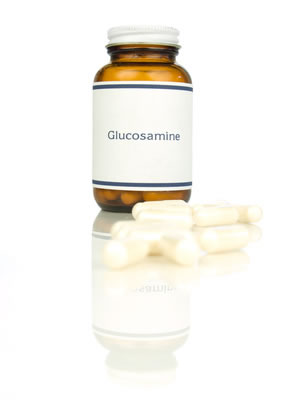Burdock (Arctium lappa), is a wild plant found in temperate regions. Historically, it has been used as a blood purifier to clear the bloodstream of toxins, as a diuretic, and as a topical remedy for skin diseases such as eczema, acne, and psoriasis. In Ayurvedic medicine, this plant is used for pneumonia and upper respiratory infections.
Burdock Health Benefits and Researches
Pharmacological researches demonstrate that burdock roots have free radical scavenging, anti-inflammatory, hepatoprotective, and antiproliferative properties. Burdock root contains high levels of inulin and mucilage. This may explain its relaxing benefits on the gastrointestinal tract. In vitro studies have exhibited that the polyacetylene component has antibacterial and fungistatic effects. Burdock root has showed activity in vitro against several gram negative bacteria; E. coli, Shigella sonnei, Shigella flexneri. An in vitro study, arctigenin is found to be an effective inhibitor of HIV type-1 integrase. Arctigenin appears to have antimutagenic activities and inhibits tumor growth in vitro. Burdock demonstrated some cytostatic activity against certain cancer cell lines and inhibited tumor-promoting activity of Epstein Barr virus. Preliminary study has shown that burdock may have anti-cancer properties and enhance quality of life in cancer patients.
Burdock root operates as a diuretic. Diuretics help rid the body of excess water by stimulating an improved urine output. Burdock improves the performance of many of the organs which purify the body and eliminate toxins or waste. In the root, the active components have been found to “detoxify” blood in terms of TCM (traditional Chinese medicine) and promote blood circulation to the skin surface, improving the skin quality/texture and curing skin diseases like eczema. In all skin diseases, it is a herbal remedy and has effected a cure in many cases of eczema, either taken alone or combined with other herbal remedies, such as sarsaparilla and yellow dock. A clinical trial found that topical application of a formulation containing burdock extract appreciably improved dermal extracellular matrix metabolism and visibly reduced wrinkles.
Animal-based researches show that burdock may fight free radicals and reduce liver damage. In an animal model, subcutaneous administration of burdock crude extract exhibited free radical scavenging activity. Arctium lappa showed hepatoprotective effects in mice injected with acetaminophen or carbon tetrachloride, which was attributed to antioxidant activities.
Burdock contains compounds that might have activity against bacteria and inflammation. The root contains up to fourteen different polyacetylene compounds, which contain antimicrobial and fungistatic effects. In a study in germany found that burdock root contains polyacetylenes, antifungal antibiotic and antifungal effects that help fight acne-causing bacteria and fungi that infect cracked skin. A new Dutch study found that burdock significantly inhibited skin allergy by reducing release of leukotrienes, which play a role in the inflammatory response.
Burdock contains inulin, (a natural dietary fiber), and is used to improve digestion. New researches confirm that burdock has prebiotic effects that could improve health. A study in England found that inulin promotes the growth of bacteria that have the property to control inflammation and eliminate unwanted pathogens. Due to its elevated inulin content, reserve polysaccharides contained in the root which are slightly sweet and remain unabsorbed by the organism, burdock is utilized to slow the digestion of carbohydrates, to reduce the absorption of glucose and to control conditions of hyperglycemia. One preliminary study found that burdock reduced proteinuria and improved post-meal blood glucose levels and lipid metabolism in people with diabetic nephropathy.
Menopause is the point in time when a woman’s menstrual periods stop. The physical and emotional symptoms of menopause may disrupt sleep, cause hot flashes, lower energy or trigger anxiety or feelings of sadness and loss. Burdock is considered a effective and safe component in a blend of herbs for the amelioration of hormonal transitions and difficulties. Burdock is an plant with weak estrogen-like actions similar to soy. In a clinical study, a formula containing tinctures of burdock, dong quai, licorice, motherwort and wild yam was found to reduce symptoms of menopause.
Side Effects
Individuals who have allergies to the Asteraceae/Compositae family should avoid burdock. Burdock root is considered a uterine stimulant and should not be used by pregnant women. Because the roots of burdock closely resemble those of belladonna, there is a risk that burdock supplements may be contaminated with potentially dangerous herbs. Cases of burdock tea contaminated with belladonna alkaloids have been reported in the USA.
 Artichoke leaf extract (
Artichoke leaf extract ( In osteoarthritis, there is a progressive degeneration of cartilage GAG (glycosaminoglycans). Glucosamine is a important structural component within joint tissue and is the starting point of the synthesis of several major macromolecules including glycoproteins, glycolipids and glycosaminoglycans. Glucosamine facilitates the synthesis of glycosaminoglycans (GAGs), and therefore replenishing the availability of these molecules would slow the degeneration of cartilage. According to a study reported in the Jan, 2001 edition of the Lancet, glucosamine helps control osteoarthritis.
In osteoarthritis, there is a progressive degeneration of cartilage GAG (glycosaminoglycans). Glucosamine is a important structural component within joint tissue and is the starting point of the synthesis of several major macromolecules including glycoproteins, glycolipids and glycosaminoglycans. Glucosamine facilitates the synthesis of glycosaminoglycans (GAGs), and therefore replenishing the availability of these molecules would slow the degeneration of cartilage. According to a study reported in the Jan, 2001 edition of the Lancet, glucosamine helps control osteoarthritis.